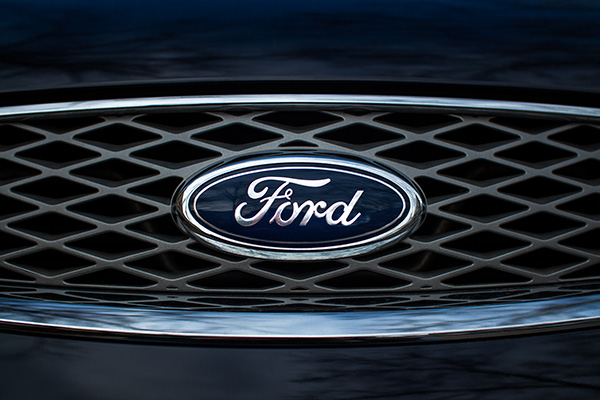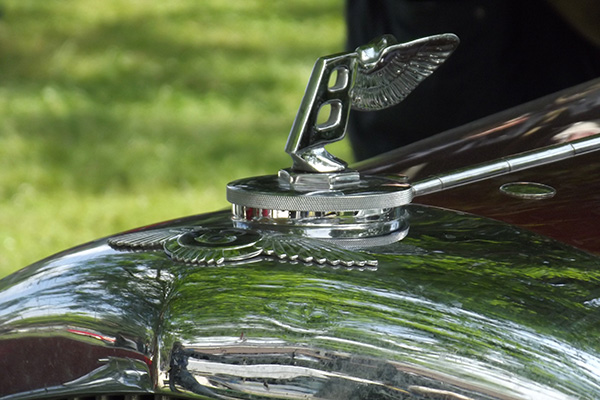Badge of honour: how car makers’ logos came about
Few things in motoring stir emotion quite like a badge. Whether it’s the galloping horse on a Ferrari, the winged “B” of a Bentley, or the blue oval of a Ford, a car’s badge isn’t just a logo - it’s a symbol of ambition, pride, and identity. But have you ever wondered where these iconic designs came from and what inspired their creation?
Car badges are more than design elements - they are shorthand for values, history, and engineering philosophy. They tell stories of national pride, industrial innovation, and human creativity. For classic car enthusiasts, badges also serve as time capsules - reminders of an era when design was both an art form and a statement of intent.
From the futurism of the Citroën chevrons to the noble elegance of Bentley’s wings, every badge carries meaning. And whether hand-painted enamel or sleek chrome, they continue to ignite passion among collectors and enthusiasts alike - proof that sometimes, a single symbol can say more than words ever could.
Here’s how some of the most recognisable car badges on the road were created and how the designs were set in stone.
Ferrari

Perhaps the most evocative emblem in the automotive world, Ferrari’s Cavallino Rampante - or “prancing horse” - has a story steeped in both tragedy and triumph. The black horse was originally painted on the fuselage of Italian WWI fighter ace Francesco Baracca’s aircraft. After Baracca’s death, Enzo Ferrari met the pilot’s parents, who suggested he use the horse as a good-luck symbol. Ferrari took their advice, adding a canary-yellow background to represent his hometown of Modena.
Ford

The Ford logo might seem simple today, but it’s the product of decades of evolution. The blue oval was first introduced in 1907 by British agents for the Ford Motor Company as a mark of quality and reliability.
The script “Ford” signature itself, however, dates back to company engineer Childe Harold Wills, who designed it based on Henry Ford’s own handwriting. The flowing script and blue background soon became synonymous with affordable, dependable motoring that remain at the heart of Ford’s global identity more than a century later.
Bentley

Few badges capture elegance and power as perfectly as Bentley’s winged “B”. Created in 1919 by artist and designer F. Gordon Crosby, the wings represent speed, freedom, and the company’s aviation-influenced engineering.
Interestingly, early Bentley badges weren’t uniform - the number of feathers on each wing differed between left and right, depending on the model and even the market. This small inconsistency has become a hallmark of authenticity among collectors and enthusiasts.
BMW

BMW’s roundel is one of the most enduring symbols in the automotive world and one of the most misunderstood. Many believe it depicts a spinning aircraft propeller, reflecting the company’s early roots as an aircraft engine manufacturer.
While that interpretation is romantic, the truth is a little simpler. The roundel’s blue and white quarters actually represent the colours of Bavaria, BMW’s home region in Germany. The propeller myth, however, gained traction after a 1929 advertisement depicted the logo over a spinning propeller and the legend stuck.
Regardless of its origin story, the badge remains a masterclass in minimal, modern design, unchanged in essence for over a century.
Citroën

In 1919, André Citroën founded his car company after making a fortune manufacturing helical gears. The unique interlocking shape of these gears inspired the brand’s famous double-chevron logo.
More than just a design flourish, the chevrons symbolise Citroën’s reputation for engineering ingenuity and forward thinking - qualities that continue to define the French manufacturer, from the DS and 2CV to the latest EVs.
Maserati

The Maserati trident was inspired by the Fountain of Neptune in Bologna’s Piazza Maggiore. Designed by artist Mario Maserati, one of the founding brothers, the emblem represented strength, vigor, and mastery of the seas - traits they wanted to translate to the road. The red and blue colouring nods to Bologna’s civic flag, tying the brand firmly to its local heritage.
Alfa Romeo

Of all car logos, Alfa Romeo’s might be the most mysterious. The brand’s badge features two halves: on the left, a red cross - the symbol of Milan - and on the right, a serpent known as a biscione, swallowing a man. The imagery originates from the crest of the influential Visconti family, who ruled Milan in the 14th century. While interpretations vary, most agree that the serpent symbolises power and renewal. Combined with the Milanese cross, it is designed to encapsulates Alfa’s fusion of local pride, daring design and racing spirit.
Volkswagen
Volkswagen’s simple yet iconic “VW” logo has undergone subtle modernisation over the decades, but its origins are steeped in practicality. Created in 1937 for the “people’s car” project (Volkswagen in German), it combines the company’s initials in a circle, representing a wheel and unity.
Post-war, the badge came to represent reliability and affordability - but also the rebirth of German industry. It is simple and, in the Eighties, where hip hop decided that the VW logo was something of a fashion accessory, it prompted mass thefts of the badge from vehicles which rendered millions of Volkswagens throughout the world with ‘a bit missing’ from the front grilles. Although unfortunate, this craze probably didn’t do VW much harm in terms of brand recognition.

COMMENT